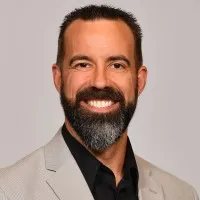Organizational silos are one of the largest problems PreSales leaders face these days - especially when companies have grown rapidly. Silos can force sales engineers to spend more of their time searching for creating reusable assets they need instead of focusing on building relationships with, and selling to, prospects. At our recent PreSales Leadership Collective Executive Summit, we had a team of experts to provide their perspective on breaking down silos:
Patty Hager, Senior Director of North America PreSales at Lenovo
Stephen Miller, Brand Ambassador at Lenovo International
Wendy McHenry, Senior Solutions Consulting Effectiveness Manager at Pegasystems
Erin McGowan, VP of Sales Engineering - Americas at Dataiku
Silos in PreSales and Beyond
Erin says that there needs to be a strategy in place to break down silos. People will collaborate more when they have the right incentive structure in place. Also several key questions need to be answered:
- What assets are worth sharing?
- How do we package and document them, and make them searchable?
- How do we facilitate communication?
- How do we store those assets and make them accessible to anyone who needs them?
Wendy notes that in PreSales, we work very fast and it’s common to work in silos. We need to focus on changing and challenging the silo - think about who could benefit from every piece of content or info. And create a natural movement to share this info with others right away. Keeping this flow simple and making it easy for everyone to share as well helps break those barriers.
When Patty started leading her new team, she first tried to speak with sales leaders because they can tell you what the PreSales brand is - and they're our internal customers. Then she pivoted to top reps and reps who weren’t good to understand best (and worst) practices. Finally, she dug with her team into what the biggest time wasters are, what is difficult when you’re mentoring someone. She found out that a lot of things weren’t written down and people couldn’t enable each other easily, and now she had a framework for what to change.
Sharing Knowledge
Wendy says the knowledge that lives in our SEs is incredibly valuable. How do you protect it, share it, and ensure it lives on? It can be helpful to consult with others who are leaders in the field of knowledge management because it's a field unto itself and you can find some good solutions.
Erin notes that she has a knowledge management system in place to leverage certain assets. But the most important piece was documented demo assets and a demo environment so every SE has every asset they need and aren’t spending valuable time maintaining demo environments.
Her PreSales team isn’t verticalized but it's important for them to get traction in certain industries. So she wanted to make sure they had the right assets when SEs are talking to a finance department or bank so they can tell the right story to the right audience and right persona - essentially verticalizing use cases.
Getting Rid of Bad Habits
Patty mentions that when initiatives were coming in from the executive level, she’d dig deep and understand what wins the PreSales assets and activities were behind and include shoutouts in staff meetings. Also she ensures there’s visibility of this great content that drove wins in all hands and with other leaders. This ensured that successful approaches had to be written down too.
Erin says there’s no silver bullet. You do need to create a culture where collaboration and cooperation are prized. You can do this by rewarding or praising SEs who create good assets or do a great demo. Or gamify it - put a contest out there with a prize and make it fun. Make a culture where people want to contribute, and praise collaboration and sharing.
Say that some new features have rolled out. Designate a day or half day for the SE team to update their demos with the latest and greatest features so everyone is up to date and demos are tight. Add in a demo competition and gamify this too - tell sales so they’re in the loop and know we’re updated as well. The reward doesn't need to be expensive, it can be a day off or something like that.
Great Reusable Assets
Patty says that the shorter the better for most assets. Also, take a look at the audience who is going to be using or collaborating with these assets first. For example, an AE needs strong qualifying questions. Data scientists, on the other hand, need uber-specific and well documented data. Determine who is using the content and what is the purpose of A+ content - to open an opportunity, do a deep depth walkthrough, or something else? With this strategic thinking in place, your asset creation process will be well guided.
Wendy notes the importance of clear, concise communication. How can we communicate effectively with SEs? They have so much info coming all the time. And how can internal SMEs keep them up to date on changes, features, industries, and so on? It might be a knowledge transfer session, or sitting down with experts to ask questions - it doesn't always need to be a demo.
Erin says the challenge at a startup is where to start - there’s so much info. Begin with the 80% rule for whatever makes SEs more productive - hone in on that right away and make those resources most effective. Then 20% is tailoring assets to tell the right story.
Selling and Not Searching
Since Patty entered her role knowing that she was going to be growing the team, she started with an onboarding team that had a lot of knowledge management and got new eyes on the onboarding plan to make sure it was well understood. She was growing the team and had nothing formally organized, but found she could chunk out the onboarding plan into different topical areas.
Wendy suggests identifying people who will be champions on your journey to breaking down silos and sharing across the org. Once you've mastered the demo assets, you can do more to make the team effective, and then you can help clients so much more. The entire org is your customer, not just sales - so ultimately they all benefit from this effectiveness.
Organizational silos are one of the largest problems PreSales leaders face these days - especially when companies have grown rapidly. Silos can force sales engineers to spend more of their time searching for creating reusable assets they need instead of focusing on building relationships with, and selling to, prospects. At our recent PreSales Leadership Collective Executive Summit, we had a team of experts to provide their perspective on breaking down silos:
Patty Hager, Senior Director of North America PreSales at Lenovo
Stephen Miller, Brand Ambassador at Lenovo International
Wendy McHenry, Senior Solutions Consulting Effectiveness Manager at Pegasystems
Erin McGowan, VP of Sales Engineering - Americas at Dataiku
Silos in PreSales and Beyond
Erin says that there needs to be a strategy in place to break down silos. People will collaborate more when they have the right incentive structure in place. Also several key questions need to be answered:
- What assets are worth sharing?
- How do we package and document them, and make them searchable?
- How do we facilitate communication?
- How do we store those assets and make them accessible to anyone who needs them?
Wendy notes that in PreSales, we work very fast and it’s common to work in silos. We need to focus on changing and challenging the silo - think about who could benefit from every piece of content or info. And create a natural movement to share this info with others right away. Keeping this flow simple and making it easy for everyone to share as well helps break those barriers.
When Patty started leading her new team, she first tried to speak with sales leaders because they can tell you what the PreSales brand is - and they're our internal customers. Then she pivoted to top reps and reps who weren’t good to understand best (and worst) practices. Finally, she dug with her team into what the biggest time wasters are, what is difficult when you’re mentoring someone. She found out that a lot of things weren’t written down and people couldn’t enable each other easily, and now she had a framework for what to change.
Sharing Knowledge
Wendy says the knowledge that lives in our SEs is incredibly valuable. How do you protect it, share it, and ensure it lives on? It can be helpful to consult with others who are leaders in the field of knowledge management because it's a field unto itself and you can find some good solutions.
Erin notes that she has a knowledge management system in place to leverage certain assets. But the most important piece was documented demo assets and a demo environment so every SE has every asset they need and aren’t spending valuable time maintaining demo environments.
Her PreSales team isn’t verticalized but it's important for them to get traction in certain industries. So she wanted to make sure they had the right assets when SEs are talking to a finance department or bank so they can tell the right story to the right audience and right persona - essentially verticalizing use cases.
Getting Rid of Bad Habits
Patty mentions that when initiatives were coming in from the executive level, she’d dig deep and understand what wins the PreSales assets and activities were behind and include shoutouts in staff meetings. Also she ensures there’s visibility of this great content that drove wins in all hands and with other leaders. This ensured that successful approaches had to be written down too.
Erin says there’s no silver bullet. You do need to create a culture where collaboration and cooperation are prized. You can do this by rewarding or praising SEs who create good assets or do a great demo. Or gamify it - put a contest out there with a prize and make it fun. Make a culture where people want to contribute, and praise collaboration and sharing.
Say that some new features have rolled out. Designate a day or half day for the SE team to update their demos with the latest and greatest features so everyone is up to date and demos are tight. Add in a demo competition and gamify this too - tell sales so they’re in the loop and know we’re updated as well. The reward doesn't need to be expensive, it can be a day off or something like that.
Great Reusable Assets
Patty says that the shorter the better for most assets. Also, take a look at the audience who is going to be using or collaborating with these assets first. For example, an AE needs strong qualifying questions. Data scientists, on the other hand, need uber-specific and well documented data. Determine who is using the content and what is the purpose of A+ content - to open an opportunity, do a deep depth walkthrough, or something else? With this strategic thinking in place, your asset creation process will be well guided.
Wendy notes the importance of clear, concise communication. How can we communicate effectively with SEs? They have so much info coming all the time. And how can internal SMEs keep them up to date on changes, features, industries, and so on? It might be a knowledge transfer session, or sitting down with experts to ask questions - it doesn't always need to be a demo.
Erin says the challenge at a startup is where to start - there’s so much info. Begin with the 80% rule for whatever makes SEs more productive - hone in on that right away and make those resources most effective. Then 20% is tailoring assets to tell the right story.
Selling and Not Searching
Since Patty entered her role knowing that she was going to be growing the team, she started with an onboarding team that had a lot of knowledge management and got new eyes on the onboarding plan to make sure it was well understood. She was growing the team and had nothing formally organized, but found she could chunk out the onboarding plan into different topical areas.
Wendy suggests identifying people who will be champions on your journey to breaking down silos and sharing across the org. Once you've mastered the demo assets, you can do more to make the team effective, and then you can help clients so much more. The entire org is your customer, not just sales - so ultimately they all benefit from this effectiveness.
Organizational silos are one of the largest problems PreSales leaders face these days - especially when companies have grown rapidly. Silos can force sales engineers to spend more of their time searching for creating reusable assets they need instead of focusing on building relationships with, and selling to, prospects. At our recent PreSales Leadership Collective Executive Summit, we had a team of experts to provide their perspective on breaking down silos:
Patty Hager, Senior Director of North America PreSales at Lenovo
Stephen Miller, Brand Ambassador at Lenovo International
Wendy McHenry, Senior Solutions Consulting Effectiveness Manager at Pegasystems
Erin McGowan, VP of Sales Engineering - Americas at Dataiku
Silos in PreSales and Beyond
Erin says that there needs to be a strategy in place to break down silos. People will collaborate more when they have the right incentive structure in place. Also several key questions need to be answered:
- What assets are worth sharing?
- How do we package and document them, and make them searchable?
- How do we facilitate communication?
- How do we store those assets and make them accessible to anyone who needs them?
Wendy notes that in PreSales, we work very fast and it’s common to work in silos. We need to focus on changing and challenging the silo - think about who could benefit from every piece of content or info. And create a natural movement to share this info with others right away. Keeping this flow simple and making it easy for everyone to share as well helps break those barriers.
When Patty started leading her new team, she first tried to speak with sales leaders because they can tell you what the PreSales brand is - and they're our internal customers. Then she pivoted to top reps and reps who weren’t good to understand best (and worst) practices. Finally, she dug with her team into what the biggest time wasters are, what is difficult when you’re mentoring someone. She found out that a lot of things weren’t written down and people couldn’t enable each other easily, and now she had a framework for what to change.
Sharing Knowledge
Wendy says the knowledge that lives in our SEs is incredibly valuable. How do you protect it, share it, and ensure it lives on? It can be helpful to consult with others who are leaders in the field of knowledge management because it's a field unto itself and you can find some good solutions.
Erin notes that she has a knowledge management system in place to leverage certain assets. But the most important piece was documented demo assets and a demo environment so every SE has every asset they need and aren’t spending valuable time maintaining demo environments.
Her PreSales team isn’t verticalized but it's important for them to get traction in certain industries. So she wanted to make sure they had the right assets when SEs are talking to a finance department or bank so they can tell the right story to the right audience and right persona - essentially verticalizing use cases.
Getting Rid of Bad Habits
Patty mentions that when initiatives were coming in from the executive level, she’d dig deep and understand what wins the PreSales assets and activities were behind and include shoutouts in staff meetings. Also she ensures there’s visibility of this great content that drove wins in all hands and with other leaders. This ensured that successful approaches had to be written down too.
Erin says there’s no silver bullet. You do need to create a culture where collaboration and cooperation are prized. You can do this by rewarding or praising SEs who create good assets or do a great demo. Or gamify it - put a contest out there with a prize and make it fun. Make a culture where people want to contribute, and praise collaboration and sharing.
Say that some new features have rolled out. Designate a day or half day for the SE team to update their demos with the latest and greatest features so everyone is up to date and demos are tight. Add in a demo competition and gamify this too - tell sales so they’re in the loop and know we’re updated as well. The reward doesn't need to be expensive, it can be a day off or something like that.
Great Reusable Assets
Patty says that the shorter the better for most assets. Also, take a look at the audience who is going to be using or collaborating with these assets first. For example, an AE needs strong qualifying questions. Data scientists, on the other hand, need uber-specific and well documented data. Determine who is using the content and what is the purpose of A+ content - to open an opportunity, do a deep depth walkthrough, or something else? With this strategic thinking in place, your asset creation process will be well guided.
Wendy notes the importance of clear, concise communication. How can we communicate effectively with SEs? They have so much info coming all the time. And how can internal SMEs keep them up to date on changes, features, industries, and so on? It might be a knowledge transfer session, or sitting down with experts to ask questions - it doesn't always need to be a demo.
Erin says the challenge at a startup is where to start - there’s so much info. Begin with the 80% rule for whatever makes SEs more productive - hone in on that right away and make those resources most effective. Then 20% is tailoring assets to tell the right story.
Selling and Not Searching
Since Patty entered her role knowing that she was going to be growing the team, she started with an onboarding team that had a lot of knowledge management and got new eyes on the onboarding plan to make sure it was well understood. She was growing the team and had nothing formally organized, but found she could chunk out the onboarding plan into different topical areas.
Wendy suggests identifying people who will be champions on your journey to breaking down silos and sharing across the org. Once you've mastered the demo assets, you can do more to make the team effective, and then you can help clients so much more. The entire org is your customer, not just sales - so ultimately they all benefit from this effectiveness.






.webp)


